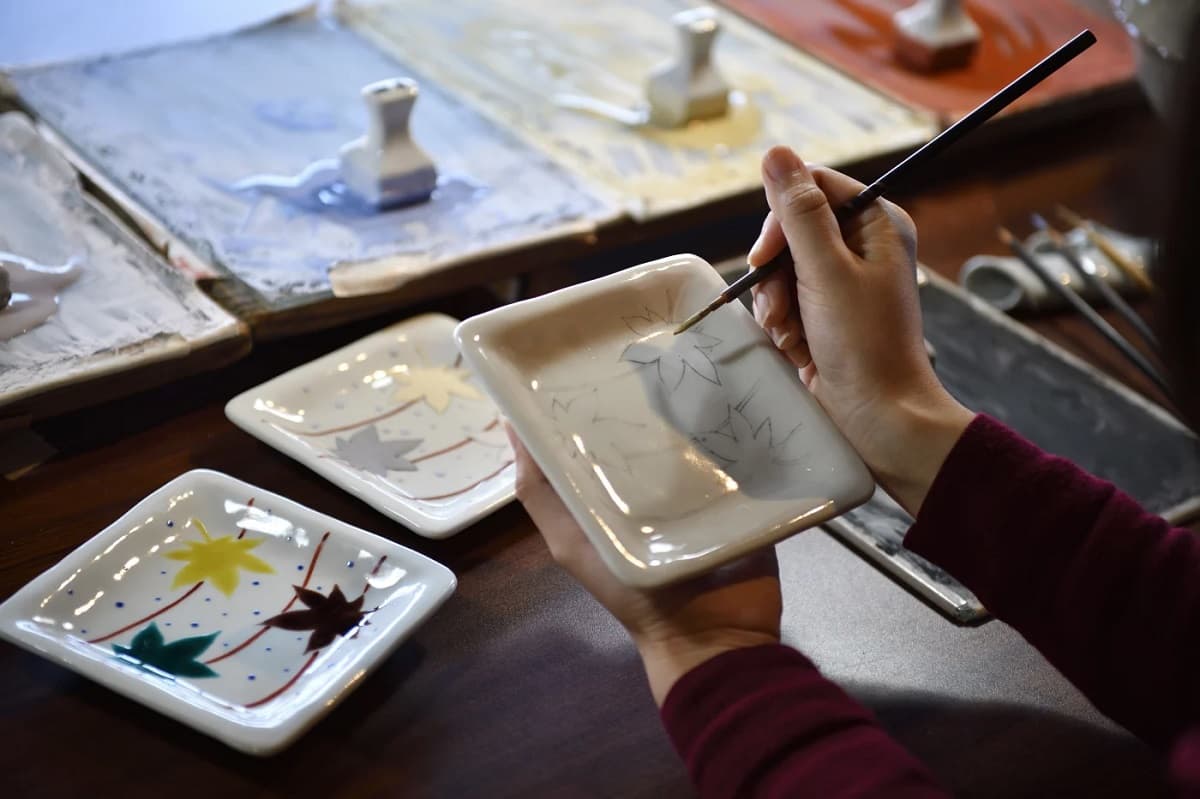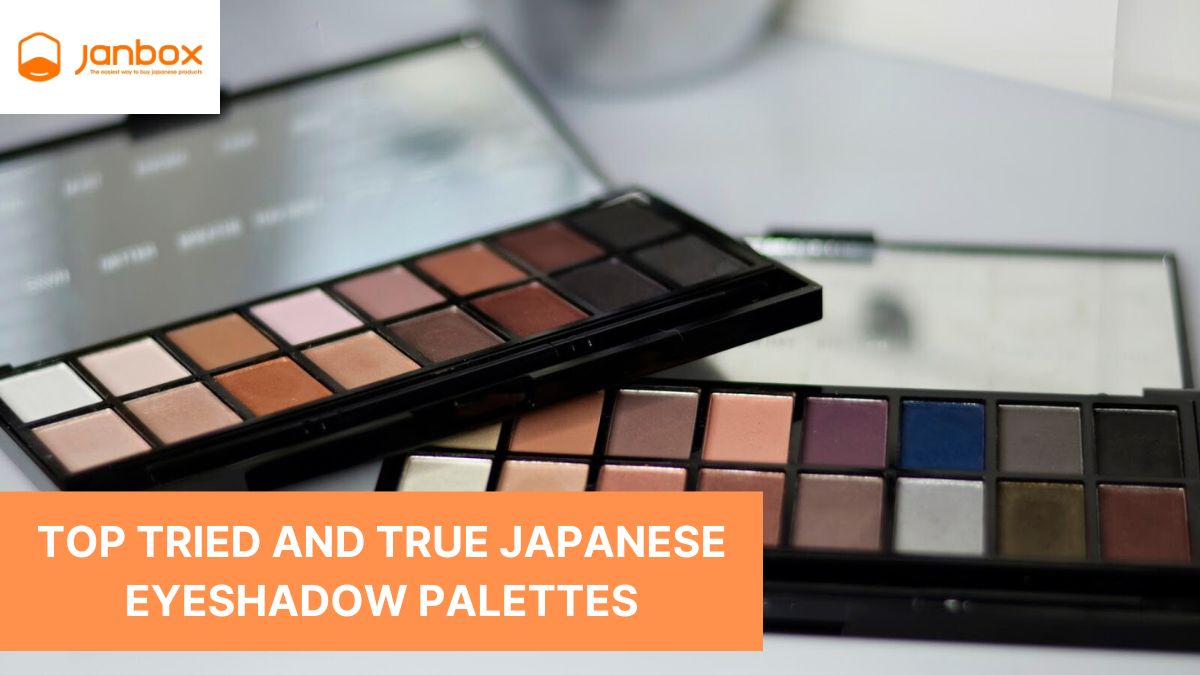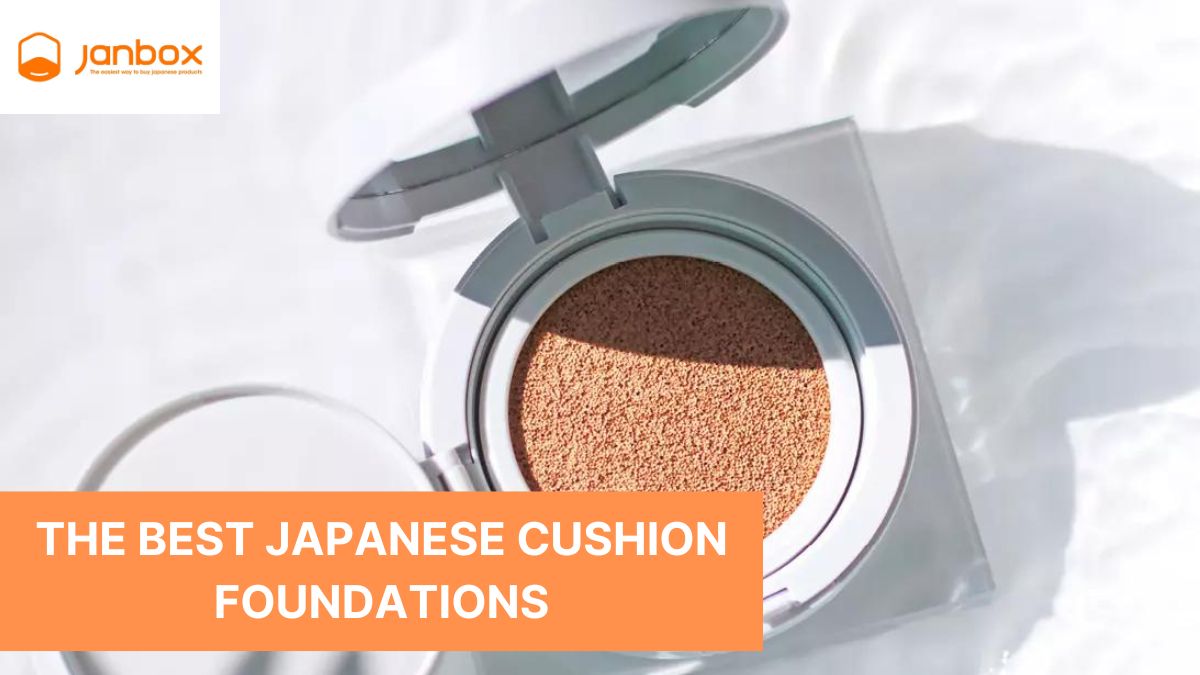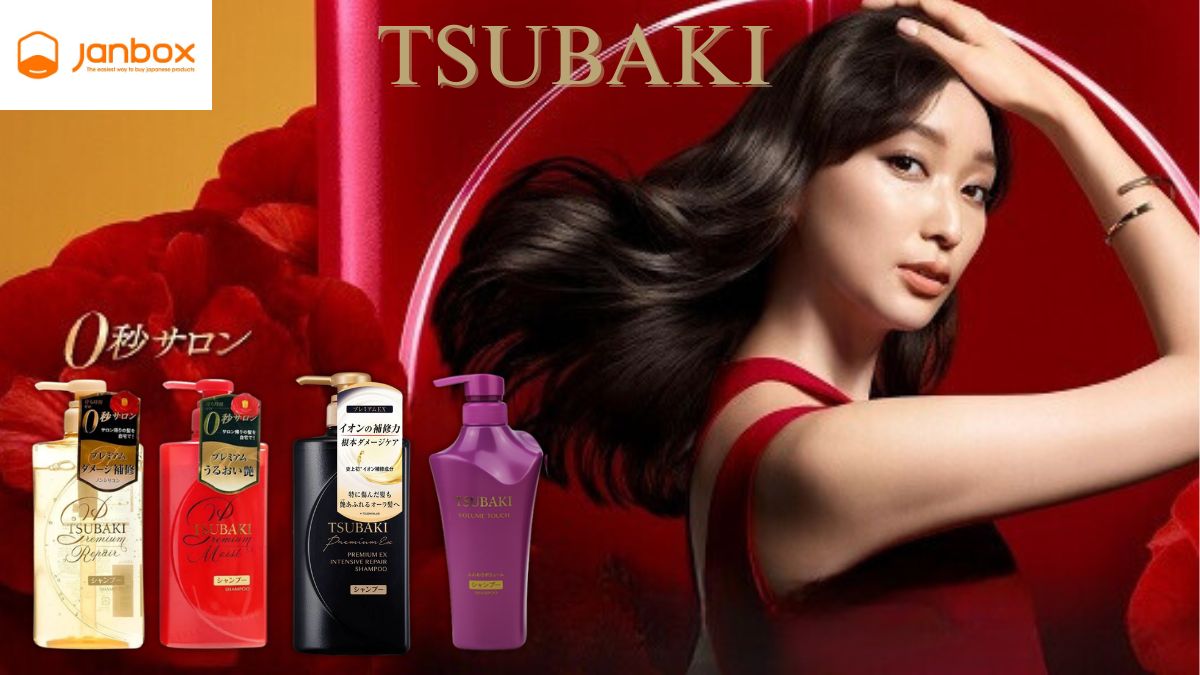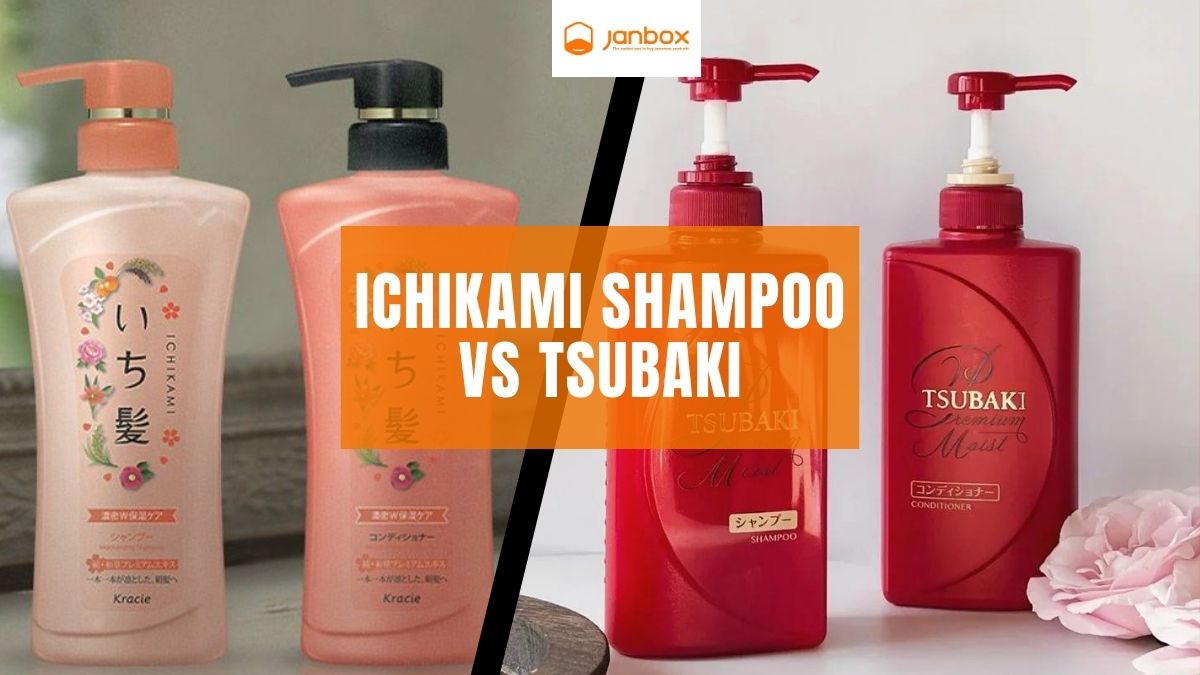Pottery is a part of a culture that has been around for a very long period, especially in Asia. This is a field that has seen substantial development in Japan and is still marked by the constant change in the present. Among these, Kutaniyaki or Kutani porcelain from Ishikawa Prefecture, which is located in the Hokuriku region and borders the Sea of Japan, has garnered a lot of interest in both Japan and other countries due to its distinctive texture and color.
I. What is Kutaniyaki?
A particular style of chinaware called Kutaniyaki is distinguished by its delicate, hand-painted embellishments, which come in five various color schemes: red, yellow, green, purple, and blue. In Japanese, the word “yakimono” refers to ceramics or porcelain. Yaki is a suffix that is appended to a word, typically a town name, to designate a specific form of pottery. Its most striking aspect is the exquisiteness of the colored painted embellishment. The roughly 350-year-long history of Kutani saw the emergence of numerous painting styles and techniques.

Japanese porcelain made in the “Kutaniyaki” or “Kutani ware” style is a traditional craft of the Ishikawa Prefecture. Kutaniyaki has recently drawn attention for its cutting-edge designs that strive to introduce porcelain into our everyday life. It appeals to both a Japanese appreciation of tradition and the beauty of the present with its vibrant colors and adorable designs. Its beauty draws customers from all over the world as well as from Japan, earning it the moniker “Japan Kutani.”
II. History of Kutaniyaki
According to legend, the first Kutani-yaki porcelain was created at Kutani village in 1655 when a kiln was established there on the orders of the feudal lord Maeda Toshiharu. Goto Sai-Jiro, a member of the Maeda clan, was dispatched to Arita (one of Japan’s many famous Ceramic Towns) in southwestern Japan at the time to research its sophisticated ceramic manufacturing techniques. This was not long after porcelain stone was discovered in a nearby mine.
Less than a century later, the Kutani kiln abruptly shuttered for unknown reasons. The items made at this time, known as ko-Kutani or old Kutani pieces, are exceptionally rare and incredibly valuable. They are renowned for having strong, dynamic lines that are adorned with extensive overglazing in the traditional “Gosai” hues.
The Kaga clan started making attempts to resurrect the extinct craft about a century after the Kutani kiln was shut down and opened the Kasugayama kiln in the castle town of Kanazawa. Soon, additional kilns began to operate around the area, giving birth to fresh designs for Kutani-yaki ware. The Eiraku kiln employed gold, whereas the Miyamoto kiln used extremely thin red lines. The Yoshidaya kiln was devoted to recreating vintage Kutani pottery. Saiko Kutani, or “the resuscitation of Kutani,” is the name given to the porcelain created at this time.
Kutani Shouza, a painter, created a painting style that incorporated gold with several Kutani coloring techniques in the late 19th century. Foreigners refer to Shouza’s aesthetic as “Japan Kutani.” His works were displayed at the Vienna World’s Fair in 1873 before being moved to Europe.
The Imperial Family has recently given Prince Charles Kutani-yaki porcelain as a gift and utilized it as a wedding gift. Additionally, Kutaniyaki tableware has unveiled a fresh batch of patterns and items made for regular usage. Popular animated characters are featured on some of these products. Even those with the most unusual designs appear to have a very Japanese vibe thanks to warm tones reminiscent of traditional Kutani-yaki ceramics. This is because the overglaze enamels soften the overall tone while giving the depth of the vibrant hue.
III. Special features of Kutaniyaki
A basic white ceramic object is typically given to the craftsman during the creation process. A Komon fine pattern, which is also visible on the kimono, will be painted by the artist. Cobalt oxide-based zaffre is used to paint the contours. Then the container is burned in the kiln, turning the zaffre dark. The completion time is about seven hours. At regular intervals, the surface is then covered once more.

For example, the five vitreous enamel colors known as Gosai-de are painted on the vessel in thick strokes for the patterns and decorations, which ultimately gives the piece a more three-dimensional appearance. The particular tones of the colors depend on the ratio employed in each glaze. The vessel is then heated to 800 degrees Celsius in the kiln once more. The artisan’s preferred translucent hues are created by the chemical reaction caused by the heat on the pigment. The intricate Komon design gives it depth when the paint transforms into translucent glass.
>> Read more: What are Japanese Tetsubin? Everything to Know About Cast Iron Kettles
IV. How is Kutaniyaki Made?
There are numerous variants within this process. Sometimes the work could need multiple firings, multiple coats of paint, or a final overlay of gold or silver. First, the designs are planned out with a pencil. Additionally, the painters employ gosu, a material mostly made of cobalt oxide that darkens in color when heated, for the base design. The pencil vanishes during the firing of the porcelain, leaving a lovely blue in its place. Then, the painters utilize Noto gosu and wa-e no gu, a kind of Japanese paint often used for glass painting, for the top design and colors. It needs to be fired one last time before the colors can be seen.

1. Making pottery from crushed stone and clay
Pottery stone must first be mined and ground into a fine powder using a pulverizer. Since impurities must be removed before the powder made from crushed pottery stone can be used, water is added to the powder before it is strained to do so. The clay is kneaded to remove air bubbles after impurities have been eliminated and extra moisture has evaporated. Before shaping, the clay is worked and allowed to rest. The clay is then prepared for shaping.
2. Forming the shape
The clay is shaped using a variety of techniques, such as the potter’s wheel (Rokuro-Seiki) or molds (Ikomi). The Rokuro-Seiki method is tossing clay onto a potter’s wheel and coiling it; the alternative involves starting with a flat slab (Ikomi). After the form is made, intricate finishing tasks including trimming the base, creating knobs, and pattern carving are carried out.
When possible, the piece is properly dried in the sun before being fired in a biscuit oven for about eight hours at a temperature of 800-900°C (about 1472-1652°F). Unglazed pottery undergoes a biscuit firing, which is a low-temperature initial firing, which transforms the color from gray to beige, boosts breakage resistance, and makes subsequent procedures like glazing considerably smoother.
3. Glost firing and glazing
A white glaze known as Hakuyu is added following the underglaze patterns. After being burned, this glaze becomes transparent and glass-like. The glass-like material strengthens and stain-resistant the vase. Applying the glaze swiftly, properly, and uniformly is crucial because it shouldn’t be either too thin or too thick. The pottery is burned in the gloss kiln for around 15 hours at a high temperature of 1300°C (about 2732°F) after the glazing is finished.
4. Overglaze embellishment
Overglaze colors are used to paint the pottery. The color and pattern of Kutani ceramics vary depending on the type. Before applying colors, Kotsugaki paintings made with black cobalt oxide paint are possible. The term “Kotsugaki,” which translates to “outlining,” is also used in Japanese paintings. After the item has been decorated with overglaze, it is fired at a temperature between 800 and 1000 °C (1417 to 1832 °F).
Beautiful hues are produced by the fusion of the paint and glaze during this firing. Gold and silver may be added to pottery, depending on the design. Silver leaf is used to color silver, and gold leaf is used to color gold. The glaze is then put on top of this, and the item is then fired a second time at about 400°C (about 752°F).
V. The typical styles of Kutaniyaki
1. Kokutani

Toshiharu Maeda, a samurai from the Daishoji clan and captain of the Edo-era Ishikawa, gave the order to bake in this manner. Baked in the Kutani village, the design is semi-abstract and uses five hues Prussian blue, yellow, blue (green), red, and purple. It was influenced by the Kano style, painted with vivacious and free-flowing lines, distinguished by a striking design and excellent color palette.
2. Mokubei

The Kasuga mountain kiln near Kanazawa, under the management of the Kaga clan, opens about 100 years after the Kutaniyaki waste kiln. A painting style in which Mokubei Aoki, a literatologist, was instructed to paint the front in red and uses five colors to show Chinese characters and other objects.
3. Yoshidaya

This design makes use of the Yoshidaya Denemon kiln with the intention of reviving Kutani. It is a style that was influenced by Aode Kutani’s paintings. The design primarily employs four hues – blue (green), yellow, purple, and iron blue – along with a variety of patterns and little patties to cover the entire surface and give it a solid appearance.
4. Iidaya

Baking in the Miyamotoya kiln, which replaced the Yoshida ya iron pod, is how this technique is accomplished. In red, it draws the viewer in while covering the entire diameter with tiny stamps. It also goes by the name Hachiro-shu after the principal worker, Iidaya Hachiro, who adds embellishments using the color gold.
5. Shouza

Shozo Kutani established the style of coloring in gold and combined all the techniques of Kokutani, Yoshidaya, Iidaya, Kanzaki, and others. This style, which is known as the “Japan Kutani,” became the predominant Kutani style after the Meiji era.
6. Eiraku

The Daisho clan of the Kaga clan branch first burned style in the Kutani major kiln. It is an opulent and elegant style of painting that uses only red and gold paint to cover the entire area.
>> Read more: Japanese Kitchenware
VI. Moritsuke & Kutaniyaki – The Inseparable Connection
The Japanese art of serving food is known as Moritsuke. While sets and basic dinnerware may be preferred in Western restaurants and homes, Japanese Moritsuke places more emphasis on the uniqueness of each piece. Making the meal appear presentable is the fundamental idea behind Moritsuke. This is accomplished through selecting the menu items and their seasonality, the dinnerware, and the way that everything is set up.

The hues and patterns of Kutaniyaki are perfect for setting a magical dinner table scene, even if the potters of Kutani may not intentionally think about Moritsuke when they create their pieces. You might serve pink sashimi with red Kutaniyaki or leafy greens with blue Kutaniyaki. Even after you’ve finished your meal, the table will still resemble a work of beauty because each Kutaniyaki bowl or plate is unique from the one before it.
1. What sets Kutaniyaki apart from other Japanese ceramics?
The five colors that distinguish Kutaniyaki from other Japanese ceramic forms are one of the most noticeable differences. These five hues – red, yellow, green, purple, and blue – are collectively known as Kutani Gosai.
They are not, however, limited to just one hue of each color. More pigment can be used to make the colors lighter or darker. The colors the artists are using, however, are invisible while they are creating; they only become visible once the object has been baked in the kiln. The superior raw materials used in Kutaniyaki, which are obtained from Ishikawa Prefecture, are another characteristic that sets it apart.
2. How should Kutaniyaki be cared for?
Since each Kutaniyaki piece is meticulously hand painted and sculpted, it should be handled with respect. Because the color is fired on, there is no more chance of discoloration than with a conventional plate. Kutaniyaki should only be hand washed and should not be subjected to high or low temperatures or the dishwasher.
3. Why is it important to preserve Kutaniyaki tradition?
The Ministry of Economy, Trade, and Industry formally recognized Kutaniyaki as a traditional craft in 1975. The next year, Ishikawa Prefecture officially recognized the craft as an Intangible Cultural Property.

Kutaniyaki is a significant component of the Japanese ceramics industry with a lengthy and diverse history, but it has also established itself elsewhere. In fact, Japan gave Prince Charles of the United Kingdom a Kutaniyaki item on his wedding day. Many artisans now make Kutaniyaki with practical use in mind, whereas in the past much of it was used only for decoration. The art form is changing to fit the present while yet upholding the lovely tradition. Traditions should be preserved, especially if they fit into contemporary society.
4. Where can you buy Kutaniyaki?
Only in the prefecture of Ishikawa is kutaniyaki produced. Numerous local eateries utilize Kutaniyaki, exhibiting vibrant colors with their farm-fresh fare, and many stores sell various iterations of the tableware.
Choemon and Cerabo Kutani are two of the top locations to purchase kutaniyaki if you’re in the Ishikawa Prefecture. Choemon, a wholesaler since its founding in 1879, transitioned to producing their own Kutaniyaki in 1941 after investing in a kiln. Choemon makes the most of their lengthy heritage by mixing traditional elements with contemporary designs. Numerous of their pieces feature the flutist, which serves as their defining motif.
On the other hand, Cerabo is a more recent establishment that debuted in 2019. By creating a place where visitors can personally taste Kutaniyaki, they hope to preserve the custom and spark interest in its production. You can make or decorate your own Kutaniyaki products here, observe the clay’s creation, or just purchase a piece from their shop.
These two kilns are both located in Ishikawa, close to the Kutani Chinaware Ceramic Art Village, where you may browse other stores selling just Kutaniyaki. If you’re not in Ishikawa, you may still support the art by purchasing it from Musubi Kiln online.
VII. Use of Kutani Ware
Kutani Ware will brighten lunchtime and create an opulent mood because of its breathtakingly vibrant colors and lovely designs. There are a few things to watch out for when using Kutani Ware if you want to use it for a long period.
- Please first boil the pottery before using it. A component of the pottery that still has water absorbency can be coated, making it more difficult to collect stains and odors by soaking it in hot water first. It is believed that a small amount of rice added to the water will improve the coating’s quality. It is suggested to immerse the plates in ice water before using them while serving raw fish meals like sashimi. By following this procedure, the scent of fish won’t linger on the dishes.
- Please wash pottery as soon as you can after using it to prevent odors and stains from lingering. The best approach to clean it is with a soft sponge or towel and water-diluted neutral detergent. Dishwashers can also be used to clean them, however, this may cause harm to some of the decorations, such as loosening and falling gold and silver ornaments or paintings losing their color.
- Remember to properly dry the pottery after washing it. It is advised to just lay a soft cloth over the areas that need painting and allow it to soak in water. Please do not vigorously wipe or rub the surface.Please avoid microwaving pottery with gold or silver ornamentation since they ignite and cause serious damage to the pottery.
>> Read more: Top 20+ Best Things To Buy In Japan 2022 [Unique From Japan]
Conclusion
The height of Japanese colorful porcelain is thought to be Kutani-yaki ware. The complex patterns of Kutaniyaki are its distinguishing features. The vibrant overglaze decorations are almost works of art in and of themselves because they are lively but graceful. Have fun discovering the various painting techniques that have evolved over time. Visit the places listed below if you’re planning a trip to Ishikawa Prefecture to discover more about one of Japan’s greatest displays of handmade crafts.
- Website: https://janbox.com
- Email: [email protected]

